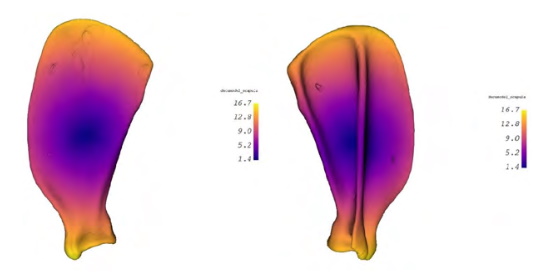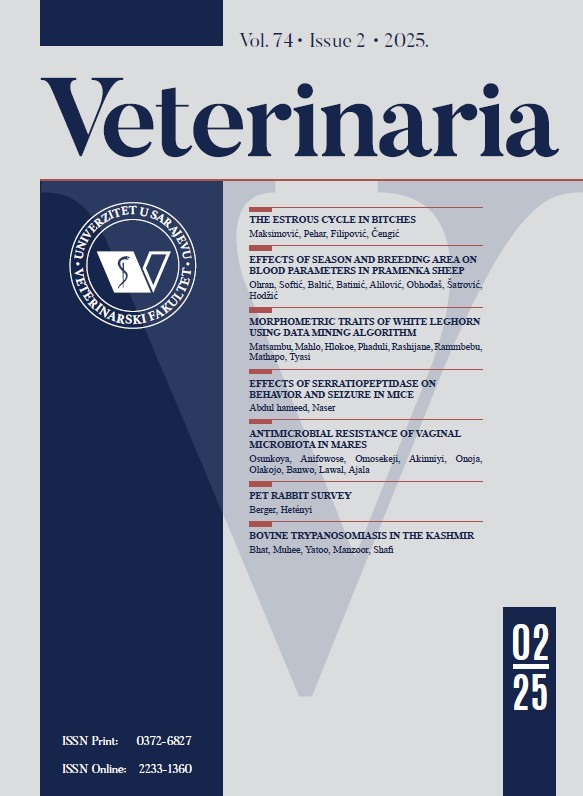Three-dimensional morphological variation and allometric analysis in dog scapula
DOI:
https://doi.org/10.51607/22331360.2024.73.1.25Keywords:
Carnivore, shape analysis, veterinary anatomyAbstract
In canines, the scapula is a flat bone that serves to connect the thoracic limb with the trunk and the clavicle, which is located above the shoulder joint. In this study, computer tomography was employed to create models of the scapulae from 25 dogs. There are 12 breeds with different age, sex and weight. 562 semi landmarks were placed on the scapulae. Applying Procrustes analysis, variance in shapes of different breeds and ages of dogs were classified. Also, with the 3D Slicer Program extension called Dense correspondence analysis, we could show the shape variation with colorimetric measurement on a mean templated scapula. Lastly, using allometric analysis, this
research also tried to point out if there is a shape change with the size change based on different breeds in dogs. In this study conducted on dogs, it was seen that PC1 explained the highest shape variation, explaining 25.4% of the total variation. It was seen that dogs were separated according to their size in PC1 values. While the PC1 value was high in small breed dogs, this value was generally negative in dogs with larger body size. While the scapula was wider in small breed dogs, the scapula in large breeds was thin and long in shape. The effect of size on shape was statistically significant. Geometric morphometrics is a valuable analytical approach for identifying the differences in animal species and their dimorphic features. This study has highlighted the effectiveness of geometric morphometrics in distinguishing shape variations and allometric differences among various breeds and age groups of dogs.

Downloads
Published
How to Cite
Issue
Section
License
Copyright (c) 2024 Ceren Nur Giray, Buket Çakar, Nicoleta Manuta, Muhammed Taha Temir, Ermiş Ozkan, Murat Karabağlı

This work is licensed under a Creative Commons Attribution 4.0 International License.







